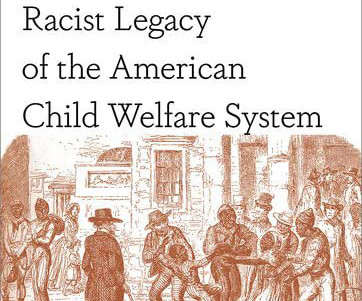Wild orangutan treats wound with pain-relieving plant
Science Daily: Pharmacology News
MAY 2, 2024
A wild orangutan was observed applying a plant with known medicinal properties to a wound, a first for a wild animal.

Science Daily: Pharmacology News
MAY 2, 2024
A wild orangutan was observed applying a plant with known medicinal properties to a wound, a first for a wild animal.

Public Health Blog
MAY 1, 2024
In our latest podcast episode, we delve into a story of transition, courage, and the unwavering human spirit as our guest, Yasir Essar, swapped his dentistry scrubs for a career in public health amid the chaotic backdrop of a global pandemic and geopolitical turmoil.
This site is protected by reCAPTCHA and the Google Privacy Policy and Terms of Service apply.

Public Health Newswire
APRIL 30, 2024
Program supporting thousands of community public health positions

Smart Data Collective
MAY 2, 2024
AI technology can help sales people make the most of POS systems, which helps them reach their goals more easily.

Science Daily: Pharmacology News
MAY 1, 2024
The health benefits of exercise are well known but new research shows that the body's response to exercise is more complex and far-reaching than previously thought. In a study on rats, a team of scientists has found that physical activity causes many cellular and molecular changes in all 19 of the organs they studied in the animals.

The New Social Worker
APRIL 30, 2024
Read The New Social Worker’s book review of Confronting the Racist Legacy of the American Child Welfare System: The Case for Abolition by Alan Dettlaff. Reviewed by Stephen Cummings.
Public Health Engage brings together the best content for public health professionals from the widest variety of industry thought leaders.

Smart Data Collective
MAY 2, 2024
AI startups should invest in the right IT support staff if they want to be successful.

Science Daily: Pharmacology News
MAY 3, 2024
A stretchy electronic skin could equip robots and other devices with the same softness and touch sensitivity as human skin, opening up new possibilities to perform tasks that require a great deal of precision and control of force.

Science Daily: Pharmacology News
MAY 2, 2024
Researchers succeeded in conducting an almost perfect quantum teleportation despite the presence of noise that usually disrupts the transfer of quantum state.

Science Daily: Pharmacology News
MAY 3, 2024
Researchers uncovered compelling evidence that Earth's magnetic field was in a highly unusual state when the macroscopic animals of the Ediacaran Period -- 635 to 541 million years ago -- diversified and thrived. Their study raises the question of whether these fluctuations in Earth's ancient magnetic field led to shifts in oxygen levels that may have been crucial to the proliferation of life forms millions of years ago.

Science Daily: Pharmacology News
MAY 1, 2024
A research team using the ChemCam instrument onboard NASA's Curiosity rover discovered higher-than-usual amounts of manganese in lakebed rocks within Gale Crater on Mars, which indicates that the sediments were formed in a river, delta, or near the shoreline of an ancient lake.

Science Daily: Pharmacology News
MAY 2, 2024
New algorithm encourages robots to move more randomly to collect more diverse data for learning. In tests, robots started with no knowledge and then learned and correctly performed tasks within a single attempt. New model could improve safety and practicality of self-driving cars, delivery drones and more.

Science Daily: Pharmacology News
MAY 1, 2024
Scientists are harnessing cells to make new types of materials that can grow, repair themselves and even respond to their environment. These solid 'engineered living materials' are made by embedding cells in an inanimate matrix that's formed in a desired shape. Now, researchers have 3D printed a bioink containing plant cells that were then genetically modified, producing programmable materials.

Science Daily: Pharmacology News
APRIL 29, 2024
It has long been thought that meat played an important role in the diet of hunter-gatherers before the Neolithic transition. However, due to the scarcity of well-preserved human remains from Paleolithic sites, little information exists about the dietary habits of pre-agricultural human groups. A new study challenges this notion by presenting compelling isotopic evidence of a strong preference for plants among 15,000-year-old hunter-gatherers from Morocco.

Science Daily: Pharmacology News
MAY 1, 2024
The brain can direct the immune system to an unexpected degree, capable of detecting, ramping up and tamping down inflammation, shows a new study in mice.

Science Daily: Pharmacology News
MAY 1, 2024
With recent studies having established the presence of nano and microplastic particles in the respiratory systems of both human and bird populations, new research has modeled what happens when people breathe in different kinds of plastic particles and where they end up.

Science Daily: Pharmacology News
MAY 2, 2024
Working with human breast and lung cells, scientists say they have charted a molecular pathway that can lure cells down a hazardous path of duplicating their genome too many times, a hallmark of cancer cells.

Science Daily: Pharmacology News
APRIL 29, 2024
Dinosaurs were likely as smart as reptiles but not as intelligent as monkeys.

Science Daily: Pharmacology News
MAY 1, 2024
The body clock has a significant impact on the performance of NBA players. Data shows vastly better win ratio for home teams from the Western Time Zone Area (PDT) when playing an EDT team, compared to vice versa.

Science Daily: Pharmacology News
MAY 3, 2024
Heavy pooling meltwater can fracture ice, potentially leading to ice shelf collapse.

Science Daily: Pharmacology News
APRIL 30, 2024
Researchers have developed a chemical process using plasma that could create sustainable jet fuel from methane gas emitted from landfills, potentially creating a low-carbon aviation industry.

Science Daily: Pharmacology News
APRIL 30, 2024
Researchers have discovered over a hundred new regions of the human genome, also known as genomic loci, that appear to influence a person's blood pressure. In total, over 2,000 independent genetic signals for blood pressure are now reported, demonstrating that blood pressure is a highly complex trait influenced by thousands of different genetic variants.

Science Daily: Pharmacology News
APRIL 30, 2024
Researchers have successfully used NASA's James Webb Space Telescope to map the weather on the hot gas-giant exoplanet WASP-43 b.

Science Daily: Pharmacology News
APRIL 30, 2024
A four-legged robot trained with machine learning has learned to avoid falls by spontaneously switching between walking, trotting, and pronking -- a milestone for roboticists as well as biologists interested in animal locomotion.

Science Daily: Pharmacology News
APRIL 29, 2024
Scientists say that an experimental monoclonal antibody drug called mAb43 appears to prevent and reverse the onset of clinical type 1 diabetes in mice, and in some cases, to lengthen the animals' lifespan.

Science Daily: Pharmacology News
MAY 2, 2024
New catalyst is made from an inexpensive, abundant metal and table sugar. Catalyst converts carbon dioxide (CO2) into carbon monoxide, a building block for producing a variety of useful chemicals including syngas. With recent advances in carbon capture technologies, post-combustion carbon capture is becoming a plausible option to help tackle the global climate change crisis.

Science Daily: Pharmacology News
MAY 1, 2024
During sleep, the brain weakens the new connections between neurons that had been forged while awake -- but only during the first half of a night's sleep, according to a new study.

Science Daily: Pharmacology News
MAY 3, 2024
New research suggests that countries' current plans to remove CO2 from the atmosphere will not be enough to comply with the 1.5 C warming limit set out under the Paris Agreement.

Science Daily: Pharmacology News
APRIL 29, 2024
When hunting for mice in winter, red and arctic fox are known to plunge headfirst at speeds of 2-4 meters per second, but their sharp noses reduce the impact force in snow and protect them from injury, according to a new study.

Science Daily: Pharmacology News
MAY 1, 2024
Researchers have discovered a potential 'cosmic glitch' in the universe's gravity, explaining its strange behavior on a cosmic scale.

Science Daily: Pharmacology News
APRIL 30, 2024
A new type of bioplastic could help reduce the plastic industry's environmental footprint. Researchers have developed a biodegradable form of thermoplastic polyurethane (TPU) filled with bacterial spores that, when exposed to nutrients present in compost, germinate and break down the material at the end of its life cycle.

Science Daily: Pharmacology News
APRIL 29, 2024
The first study of the use of microarray patches to vaccinate children has shown that the method is safe and induces strong immune responses. The phase 1/2 randomized trial compared results from the measles and rubella vaccine delivered by a microarray patch, a small sticking plaster-like device with an array of microscopic projections that painlessly penetrate the skin and deliver the vaccine, or by conventional injection with a needle and syringe.

Science Daily: Pharmacology News
APRIL 30, 2024
An estimated 168 billion gallons of wastewater -- or produced water -- is generated annually by the Permian Basin fracking industry, according to a 2022 report. The major waste stream has proved both difficult and costly to treat because of the chemical complexity of the water.

Science Daily: Pharmacology News
APRIL 29, 2024
Astronomers have confirmed that differences in binary stars' composition can originate from chemical variations in the cloud of stellar material from which they formed. The results help explain why stars born from the same molecular cloud can possess different chemical composition and host different planetary systems, as well as pose challenges to current stellar and planet formation models.
Let's personalize your content